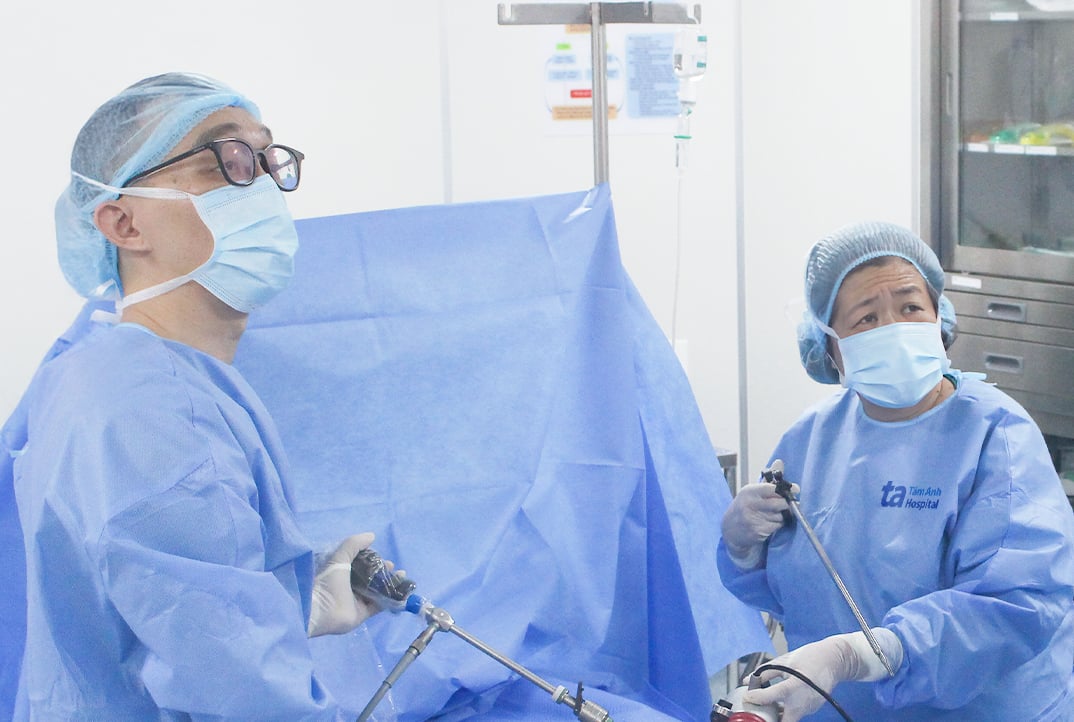Dr. Le Duc Hung of the Obstetrics and Gynecology Center at Tam Anh General Hospital in Ho Chi Minh City explained that a corpus luteum cyst forms every month during the menstrual cycle. It typically lasts for about two weeks, from after ovulation until before the first day of the next menstrual period. Under the influence of pituitary hormones, the corpus luteum ruptures, releasing an egg into the fallopian tube, where it awaits fertilization. If the egg is not fertilized, the corpus luteum gradually disappears, and the ovulation process continues. If the cyst ruptures at the site of a large blood vessel, it can lead to heavy bleeding. In some cases, the cyst does not disappear, but instead grows and accumulates fluid, potentially causing ovarian torsion.
Minh experienced ovarian torsion and a ruptured corpus luteum cyst, resulting in intra-abdominal bleeding. According to Dr. Hung, these are two situations requiring emergency surgery. Delays can lead to the need for ovary removal due to necrosis or acute blood loss from uncontrolled internal bleeding.
 |
Dr. Duc Hung (right) and Dr. My Nhi (left) performing the surgery. Photo: Tue Diem |
Dr. Duc Hung (right) and Dr. My Nhi (left) performing the surgery. Photo: Tue Diem
During the laparoscopic surgery, 50 ml of dark red blood and blood clots were found in the abdomen. The left adnexa was twisted two times, showing signs of cyanosis. The left ovary was enlarged, measuring approximately 5x5x6 cm, with necrotic tissue around the corpus luteum cyst. The surgical team untwisted the ovary, removed the cyst and necrotic tissue, cauterized the bleeding area, and successfully preserved the ovary. Minh recovered quickly after the surgery and was discharged after three days.
To prevent ovarian torsion and corpus luteum rupture, women should avoid high-intensity exercise and heavy lifting towards the end of their menstrual cycle, as well as excessively vigorous sexual activity.
Functional ovarian cysts are usually harmless, asymptomatic, and disappear without treatment within 1-2 months. Large cysts may cause symptoms like frequent urination (due to pressure on the bladder), abdominal pain, menstrual irregularities, and weight gain. More severe symptoms, including sudden abdominal pain, nausea and vomiting, dizziness, paleness, vaginal bleeding, and low blood pressure, can occur if the cyst twists, bleeds, or ruptures. In such cases, immediate medical attention is required.
Tue Diem
*The patient's name has been changed.
| Readers can submit questions about obstetrics and gynecology here for doctors to answer. |












